Architectural Evolution and Transformation in Dubai
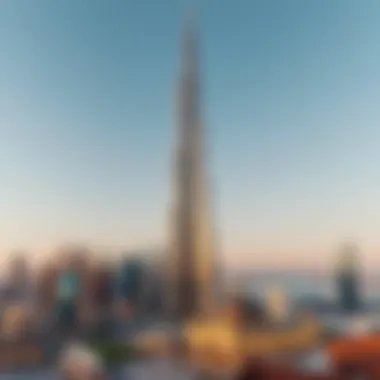
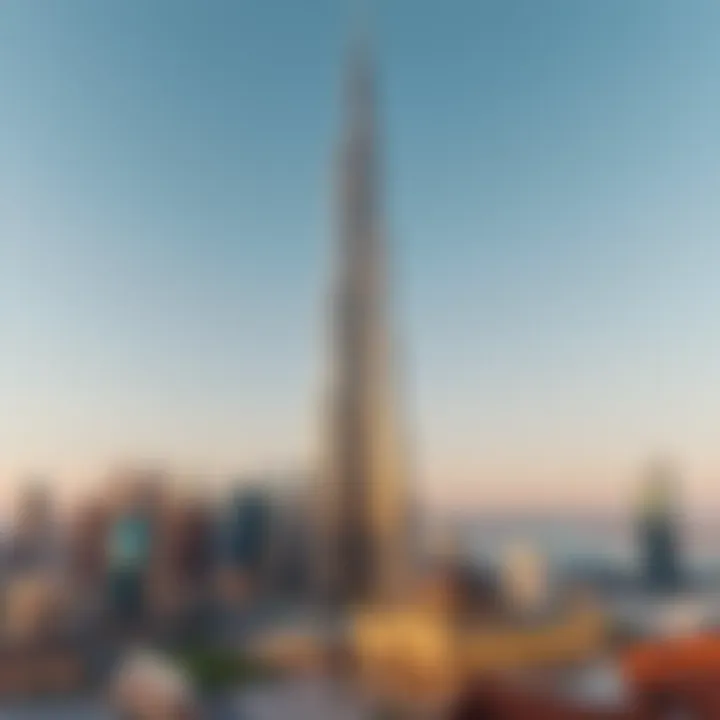
Intro
Dubai's architectural landscape has experienced a seismic shift over the past few decades, transforming it into a dynamic city that reflects both tradition and modernity. The rapid development in this emirate stands as a testament to human ingenuity, where the horizon is punctuated by towering skyscrapers designed to surpass the limits of engineering and imagination. The city's commitment to innovation is not just a matter of aesthetics but also embodies socio-cultural aspirations, as residents and visitors navigate a space that balances luxury, functionality, and sustainable practices.
This article examines various facets of Dubai's architectural journey, including current trends, investment opportunities, and lifestyle features that make Dubai not just an architectural marvel but a vibrant living environment. With globalization influencing local design philosophies, the narrative further explores how these structural evolutions mirror the city's identity and the aspirations of its inhabitants.
The examination of iconic structures, along with a look at how sustainability is becoming an essential part of architectural design, forms the crux of the discussion. By delving into significant projects and various architectural styles, esteeming readers will gain comprehensive insights into what the future holds for this city of dreams.
The Historical Context of Dubai's Architecture
Understanding the historical context of Dubai's architecture provides invaluable insights into the city's rapid evolution into a modern metropolis. The way architecture develops often reflects the culture, economy, and social dynamics of a place. In Dubai, this is particularly pronounced due to the city's unique journey from a small fishing village to a global hub. The architecture narrates the story of a city caught between tradition and modernity, showcasing how each phase in its development has been influenced by local conditions, external factors, and aspirations.
Traditional Emirati Structures
Traditional Emirati structures are a nod to the region's rich heritage. Buildings like the barasti houses, constructed from palm fronds, exemplify the need for defensible shelters that meld with the hot desert climate. Another remarkable structure is the wind tower, known locally as the barjeel, which ingeniously captures cooler breezes and facilitates airflow within homes.
These architectural forms not only served practical functions but also represented communal values and priorities. For instance, often these homes were built with privacy in mind, reflecting the importance of family and social status in local culture. The interplay between the harsh environment and the materials available shaped a distinctive architectural language, underlining the engrained skills and traditions passed down through generations.
Colonial Influences
The colonial era left an indelible mark on Dubai’s architectural landscape. With British influence permeating the region, new ideas and styles began to filter into the local scene. Buildings such as the Al-Fahidi Fort, which dates back to the late 19th century, serve as historical artifacts that speak to colonial interactions. The presence of colonial architecture often resulted in a hybridization of styles, blending Western elements with traditional designs.
This period was not merely about the influence of foreign powers, but it also marked a significant shift in urban planning. The introduction of new public buildings often symbolized progress and connection to the outside world. It was during this time that the first formal institutions were established, paving the way for services and concepts that would eventually cater to a growing population.
The Oil Boom and Rapid Urbanization
The discovery of oil in the mid-20th century dramatically altered Dubai’s trajectory. This windfall birthed an economic renaissance, fueling an era of unprecedented construction. The architectural landscape transformed almost overnight, as skyscrapers began to dominate the skyline and luxury apartments shot up across the city.
The oil boom not only attracted a wave of expatriates but also prompted massive investments in infrastructure. The architectural projects that emerged were often monumental in scale, designed by international architects who sought to leave their mark in the region. Notable implications of this boom included the emergence of vibrant neighborhoods and commercial hubs, fundamentally reshaping how the urban space was utilized.
In summary, the historical context of Dubai's architecture assists us in understanding the various factors that have influenced its growth. From traditional methods relying on local materials to colonial impacts, and finally the explosive changes brought about by the oil boom, this narrative weaves a rich tapestry of cultural evolution intertwined with the aspirations of its people. This backdrop serves not just as a reflection of a city’s past but also as a blueprint for its future developments.
"Architecture should speak of its time and place, but yearn for timelessness." - Frank Gehry
Sources:
Iconic Buildings and Their Significance
Dubai's skyline is a testament to human ingenuity and ambition, with its iconic buildings becoming symbols of wealth and progress. These structures are more than mere architectural achievements; they encapsulate the socio-economic evolution of the city and reflect its aspirations towards modernity while respecting its cultural roots.
In this section, we'll examine three of the most prominent buildings in Dubai, each showcasing a different narrative and significance, contributing to the overall architectural landscape.
Burj Khalifa: A Beacon of Modernism
Architectural Feats
The Burj Khalifa, standing tall at 828 meters, is a remarkable example of modern architectural feats. Design challenges posed by such an ambitious structure were overcome with innovative engineering techniques. The building employs a unique buttressed core structure, enhancing stability in winds and seismic loads. The incorporation of advanced glass technology not only allows for spectacular views but also helps regulate temperature, illustrating the balance between aesthetics and functionality.
Such factors make the Burj Khalifa an emblem of architectural prowess. It demonstrates how engineering skills can push boundaries, achieve sustainable design goals, and create a sense of wonder. With its height and elegant silhouette, it's a popular choice for showcasing Dubai's ambition on the world stage.
Community Impact
Burj Khalifa has a profound impact on the community surrounding it. Not simply a tourist attraction, the skyscraper serves a dual role by integrating residential, office, and hospitality spaces. Local businesses benefit from the high foot traffic, boosting economic activity in the area.
The public plaza at its base fosters community engagement, providing an accessible gathering space in an otherwise towering urban environment. While some may argue that the focus on tourism detracts from local culture, the pragmatism of revitalizing surrounding neighborhoods speaks volumes about the positive ripple effects such architectural wonders can generate.
Burj Al Arab: Symbol of Luxury
Design Philosophy
Renowned for its distinctive sail-like silhouette, the Burj Al Arab articulates a design philosophy that maximizes luxury and exclusivity. Each aspect, from the lavish interiors adorned with gold leaf to the strategically placed windows designed for stunning views, reflects opulence. The vision was not merely to create a hotel, but a living symbol of Dubai’s status as a hub for affluence and a magnet for international tourism.
This building doesn’t just cater to luxury travelers; it serves as a physical manifestation of the playful yet grand aspirations of a rapidly evolving city. However, such extravagance can fuel criticisms regarding excess, raising questions about sustainability and the ethics of opulence in contemporary architecture.
Cultural Reception
The Burj Al Arab's reception is mixed, seen as both an iconic lifestyle marker and a target of critique. Many regard it as an architectural wonder that represents innovation, while others express discomfort with its luxury amidst social inequality.
The hotel has captivated visitors and critics alike, earning a place among the world’s most photographed buildings. In a city striving for international recognition, its unique design attracts media attention, ensuring that Dubai remains at the forefront of architectural discourse. Yet, the disconnect between luxury and accessibility remains a conundrum that continues to spark dialogues in architectural circles.
The Dubai Frame: Bridging Past and Future
Historical Narratives
The Dubai Frame stands as a literal and metaphorical bridge between the past and the future. This architectural marvel, symbolizing a harmonious connection between old Dubai and its modern counterpart, invites exploration through a curated narrative. The structure allows visitors to gaze across the city, illuminating the historical narratives of a once humble fishing village transformed into a global metropolis.
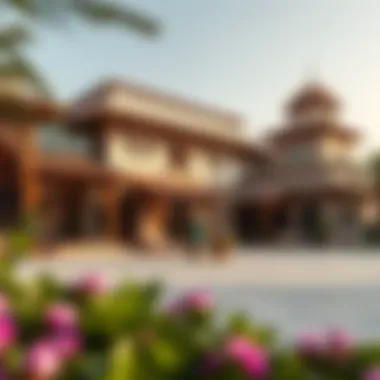
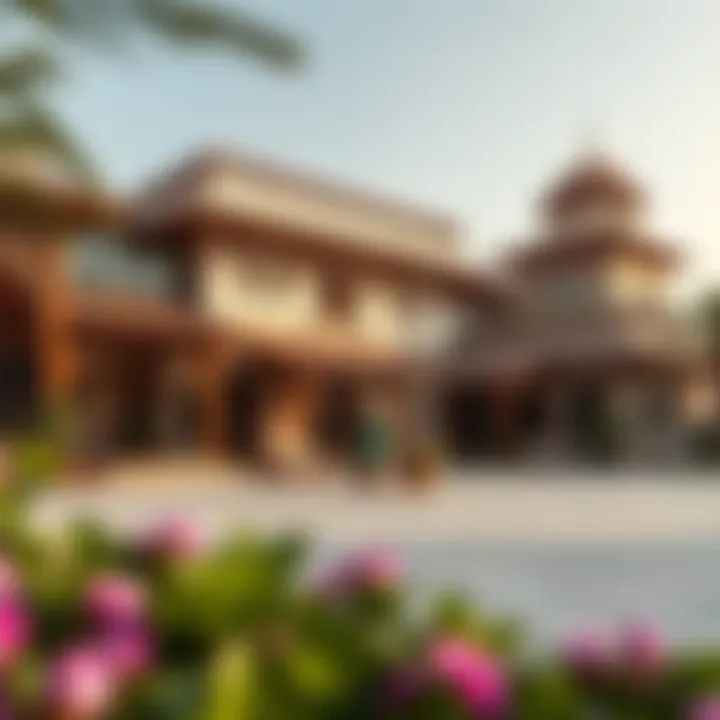
Visitors learn about Dubai’s history through interactive exhibits, reinforcing the importance of remembering one’s roots while embarking on a path toward innovation and modernity. Yet, some critics point out that while it serves as a fantastic archway to history, it might oversimplify complex socio-cultural transitions.
Visitor Experience
The visitor experience at Dubai Frame is encapsulated in its innovative design. A pathway allows tourists to walk through and observe contrasting vistas of historic and modern Dubai. This not only serves as an engaging educational journey but also as a reminder of the city’s transformative journey.
However, the influx of tourists presents its own challenges, leading to overcrowding and pressures on infrastructure. Still, the balance struck at the Dubai Frame between education, connection, and celebration of cultural heritage positions it as a valuable part of Dubai’s architectural offering, inviting visitors to reflect on the city’s evolution.
The iconic buildings of Dubai not only reflect the city's ambition but also embody the challenges and triumphs of its cultural narrative. Each structure tells a story, intertwining the threads of the past and the hopes for the future.
Architectural Styles in Dubai
The architectural styles in Dubai reveal a tale of remarkable transformation, reflecting both its rich cultural heritage and a desire to embrace modernity. The significance of this subject cannot be overstated, as it showcases the city's aspirations and concerns, while also highlighting how various architectural influences intertwine to shape the urban landscape. As an investor, homeowner, or expatriate, understanding these styles provides valuable insight into the city’s identity and potential for growth.
The following sections cover distinctive architectural styles that dominate Dubai, including Islamic architecture, the modernist wave, and postmodern creations. Each style brings forth unique characteristics, advantages, and challenges that contribute to the overall tapestry of Dubai’s structures.
Islamic Architecture
Islamic architecture stands as a profound testament to the city’s cultural roots. This architectural form intricately marries aesthetics with spiritual elements, creating structures that resonate with local traditions and values.
Geometric Patterns
Geometric patterns are a hallmark of Islamic architecture. Their intricate, repeating motifs symbolize unity and the infinite nature of creation. This aspect contributes significantly to the overall topic by reflecting the cultural and spiritual undertones of the Emirati identity. These patterns, often found in mosques and public buildings, serve not just a decorative purpose but also invite contemplation and peace.
A key characteristic of geometric patterns is their ability to create visually compelling facades, which are a beneficial choice when designing public and communal spaces. They offer a unique feature that engages the viewer's mind, often prompting an exploration of their meanings. However, one disadvantage can be the complexity in the design process, which requires skilled artisans committed to maintaining traditional craftsmanship.
Calligraphic Elements
Calligraphic elements add another layer of elegance to Islamic architecture, representing another aspect integral to this traditional style. The artistry of Arabic calligraphy conveys messages of faith and wisdom, thus fulfilling both aesthetic and communicative functions. These elements afford a sense of cultural authenticity and identity, enhancing the visual narrative of buildings.
One of the key features of calligraphy lies in its ability to flow harmoniously within various structures, making it a popular choice for architects engaged in designing cultural sites like museums or mosques. The challenge, however, rests in ensuring that the calligraphic design complements the building's overall form, enhancing rather than overwhelming.
Modernist Influences
Modernist influences in Dubai’s architecture signify a break from tradition and the exploration of new design philosophies driven by functionality and simplicity. This evolution reflects the city’s rapid development and global aspirations.
Minimalism
Minimalism represents one of the key aspects of modernist architecture, advocating for simplicity and the elimination of excess. This approach is pivotal in Dubai, where towering structures and expansive builds can dominate the skyline. It emphasizes the idea that less is more, creating spaces that foster serenity and clarity.
The hallmark of minimalism lies in clean lines, muted color palettes, and open spaces, making it a beneficial choice for residential and commercial developments. An advantage of this style is its ability to promote energy efficiency and sustainability. However, there is also the risk that minimalism can lead to sterility if not infused with warmth or personality.
Functional Aesthetics
Functional aesthetics focuses on the duality of beauty and utility, ensuring that architectural designs serve practical purposes while still being visually appealing. This style contributes significantly to the overall architectural discourse in Dubai, marrying efficiency with a contemporary aesthetic.
The key characteristic of functional aesthetics is that it values the user experience, making it a popular option among developers and architects aiming for longevity in their projects. It encourages buildings that are adaptable and user-friendly. Nonetheless, a potential drawback could arise if the functional aspects overshadow architectural creativity, resulting in uninspired designs.
Postmodern Structures
Postmodern structures are characterized by their eclecticism, embracing a variety of influences and styles, reflecting the diverse cultural fabric of Dubai.
Eclectic Designs
Eclectic designs emphasize a blend of different styles and elements, creating a unique visual dialogue. This aspect profoundly contributes to Dubai’s architectural landscape, showcasing its openness to varied influences. The key characteristic of eclectic design is its playful interplay of forms and ideas, allowing architects to experiment with creativity.
This style's benefits lie in its potential for innovation, making every building a conversation piece. However, the risk of incoherence can appear if a cohesive narrative is not established among the different elements, possibly leading to chaotic visuals.
Contextual Architecture
Contextual architecture aims to create harmony between a structure and its surroundings, taking into account local culture, climate, and history. This approach provides a foundation for relevance in a fast-evolving city like Dubai, ensuring that new constructions resonate with their environment.
The defining characteristic of contextual architecture is its responsiveness to the immediate surroundings, melding seamlessly with the existing urban fabric, which can be a beneficial choice as it nurtures a community connection. On the downside, however, contextual considerations may potentially limit creative expression by constraining design possibilities, especially when firms navigate strict zoning laws and regulations.
Dubai's architectural styles not only serve as a visual feast but also as reflections of the city's identity, ambitions, and the challenges ahead. As the landscape continues to evolve, each style adds a unique layer to the ongoing narrative of this vibrant city.
Impact of Globalization on Dubai's Architecture
Globalization has been a key player in shaping the architectural scene of Dubai, transcending boundaries and introducing a medley of influences that resonate through its skyline. As a city where tradition meets modernity, Dubai’s architecture reflects a dynamic interplay of diverse cultural narratives and design philosophies. This section delves into how globalization has impacted the architectural landscape, spotlighting the contributions of international architects, the blending of various cultures, and the prominence of global competitions and awards that celebrate innovation and creativity in design.
International Architects in Dubai
The influx of renowned international architects has profoundly influenced Dubai’s architectural expression. When a city opens its doors to creative minds from different parts of the world, it weaves varied narratives into its identity. Notable figures like Zaha Hadid, with the stunningly fluid forms of the Heydar Aliyev Center, and Norman Foster, with the striking framework of the Masdar City project, have left indelible marks on Dubai’s urban fabric.
Their interactions with local builders and artisans have fostered a new design dialogue, resulting in structures that not only stand tall but also tell stories of collaboration.
- Here are a few key architects who have reshaped Dubai's landscape:
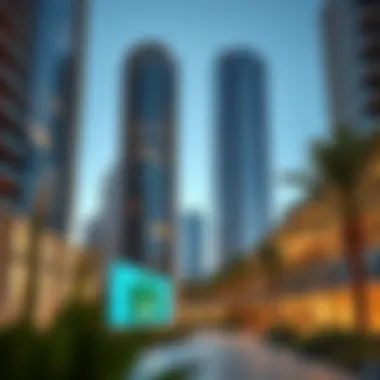
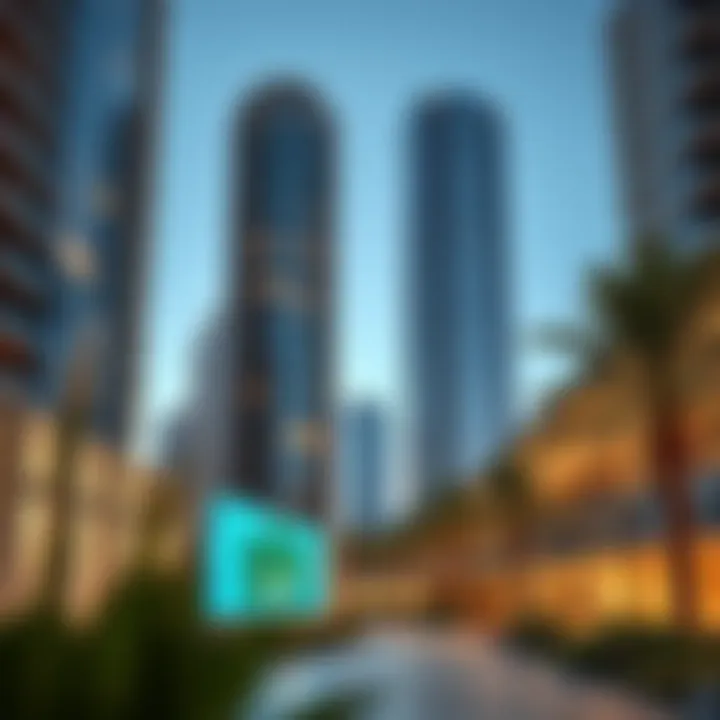
- Zaha Hadid – Known for her futuristic and organic designs.
- Norman Foster – Notable for his sustainable architecture.
- Frank Gehry – Recognized for his deconstructivist style, seen in the upcoming Dubai Towers.
The collaboration with these architects has not only elevated Dubai’s profile on the global architectural stage but has also created opportunities for local artisans and laborers to engage with cutting-edge designs, enhancing their skill sets in the process.
Crossover of Cultures
Dubai's architecture is a vivid reflection of cultural cross-pollination. As inhabitants and visitors from various backgrounds converge in this city, architectural styles blend seamlessly. Take, for instance, the facades that meld traditional Islamic motifs with sleek contemporary lines, forming structures that capture both heritage and modernity.
This architectural synthesis is crucial because it fosters a sense of belonging and community in an ever-evolving urban environment. The influence of Asian, Middle Eastern, and Western design elements creates spaces that are both functional and aspirational.
"In Dubai, every building tells a story—not just of its own existence, but of collective aspirations and shared dreams across cultures."
Some examples of this cultural crossover include:
- The Louvre Abu Dhabi by Jean Nouvel, which embodies a dialogue between the East and the West.
- Dubai's Jumeirah Mosque, showcasing beautiful Islamic architecture while welcoming people of all faiths and backgrounds for educational tours.
This cultural integration not only enhances the aesthetic appeal of the city but also encourages harmony among its residents, reflecting a globalized world where ideas and styles transcend geographic limits.
Global Competitions and Awards
Dubai’s engagement in global architectural competitions underscores its commitment to innovation and excellence. Events like the World Architecture Festival and the Design Awards attract submissions from architects worldwide, which stimulates local firms to push their creative boundaries.
This competitive spirit is not just about winning accolades; it fosters a culture of creativity that reshapes the architectural genius of the city. When Dubai is showcased on platforms that spotlight architectural brilliance, it attracts talent, tourists, and investors alike.
Noteworthy listings and recognitions significantly elevate Dubai’s standing on the global stage, thus encouraging:
- Sustainable designs that harmonize with environmental considerations.
- Innovative approaches to landscaping and urban planning, promoting green spaces among high-rises.
In sum, globalization has not only influenced Dubai’s architectural style but has also provoked a deeper conversation about identity, sustainability, and future directions of the built environment. As the city continues to evolve, it stands as a living testament to the strengths of cultural collaboration and innovative thought.
Sustainability in Dubai's Architectural Developments
Sustainability is not just a buzzword; it has become a central component in shaping the architectural landscape of Dubai. The city, known for its dazzling skyline and architectural wonders, is increasingly turning its focus towards practices that not only enhance its urban appeal but also address environmental challenges. With the pressing realities of climate change and resource scarcity, integrating sustainability into architecture is now paramount. This approach ensures the city’s development remains viable for future generations while also enhancing the quality of life for its residents.
Sustainable Building Practices
Green Certifications
Green certifications are a cornerstone of sustainable building practices in Dubai. These certifications, such as LEED (Leadership in Energy and Environmental Design) and Estidama, signify that a building meets high environmental standards. Their contribution to sustainable architecture is multifold. Firstly, they encourage the use of eco-friendly materials and technologies, which reduces the carbon footprint of constructions.
A key characteristic of these certifications is their emphasis on energy efficiency and water conservation. Buildings that attain green certification are often viewed as more attractive to investors and homeowners alike because they not only promise reduced utility costs but also align with a growing conscientiousness towards environmental stewardship.
Unique features of green certifications include stringent compliance with waste management regulations and sustainable landscape practices. Although there can be challenges, such as higher upfront costs and the complexity of adherence to certification requirements, the long-term savings and environmental impact provide significant advantages.
Energy Efficient Designs
Energy-efficient designs play a pivotal role in redefining Dubai’s architectural landscape. These designs focus on maximizing energy savings through innovative layouts and materials. They contribute significantly to the overarching theme of sustainability by minimizing energy consumption, particularly in heating, cooling, and lighting.
A notable characteristic of energy-efficient designs is their strategic orientation, allowing buildings to benefit from natural light and ventilation. This not only helps in reducing electricity consumption but also enhances the comfort of inhabitants. Such designs are increasingly popular as they resonate with the global shift towards sustainable living.
Innovative features often found in these designs include high-performance insulation, double-glazed windows, and smart energy management systems. However, it’s worth noting that while energy-efficient designs necessitate initial investment, the subsequent reduction in energy bills and the contribution to a lower carbon footprint often outweigh these costs in the long run.
Innovative Materials and Techniques
Innovative materials and techniques are revolutionizing construction methods in Dubai. The use of locally sourced materials, for instance, reduces transportation emissions and supports the local economy. Fabrics such as recycled steel and sustainable timber achieve both functionality and aesthetic appeal, ensuring buildings are not only environmentally responsible but also visually striking.
Techniques such as modular construction and prefabrication allow for faster build times and reduced waste, aligning with sustainability objectives. As architects experiment with these novel materials and methods, the outcomes often push the boundaries of contemporary design.
Vision 2040: Future-Proofing Dubai
Vision 2040 plays a fundamental role in strategizing Dubai's urban and architectural future. This ambitious initiative aims to create a holistic urban environment that prioritizes sustainability and livability. It envisions a city that harmonizes urban development with natural landscapes, promoting community engagement through well-thought-out public spaces.
In the realm of architecture, Vision 2040 underscores the importance of incorporating green spaces and promoting walkability, which can significantly reduce urban heat and enhance air quality. It also advocates for technology integration to build smart infrastructures that aid in efficient resource management.
Overall, as Dubai moves towards achieving this vision, the goal is to foster an environment where both residents and visitors can thrive. These concerted efforts emphasize that one can indeed pursue grandeur without compromising the well-being of the planet.
By prioritizing sustainable practices, Dubai not only addresses current challenges but also sets a precedent for future urban developments globally.
Public Spaces and Urban Planning
Public spaces and urban planning are pivotal in shaping the architectural dialogue in Dubai. The city’s development has surged ahead, transforming from a fishing village to a global metropolis in a few short decades. Amidst this whirlwind of rapid progress, the importance of thoughtful urban planning cannot be overstated. Public spaces serve as the beating heart of the city, promoting community interaction, environmental sustainability, and overall quality of life.
The benefits of well-planned public spaces are manifold. They provide essential areas for recreation, relaxation, and social engagement, contributing to the social fabric of the community. Residents and visitors can enjoy parks, waterfronts, and plazas, fostering a sense of belonging and identity amid the glass towers and busy streets.
Urban planning also involves understanding the needs of a diverse population. As Dubai attracts expatriates from all corners of the globe, integrating various cultural elements into public spaces ensures that these areas resonate with all demographics. In this sense, urban planners are tasked with a unique challenge: to create spaces that are inclusive yet reflect the city's rich heritage.
Sustainability is another key consideration in public space development. Implementing green spaces can significantly mitigate the urban heat island effect, enhance air quality, and provide a habitat for local flora and fauna. Incorporating environmentally friendly materials and practices in parks and recreational areas aligns with Dubai's broader sustainability goals, particularly those outlined in the Dubai Clean Energy Strategy.
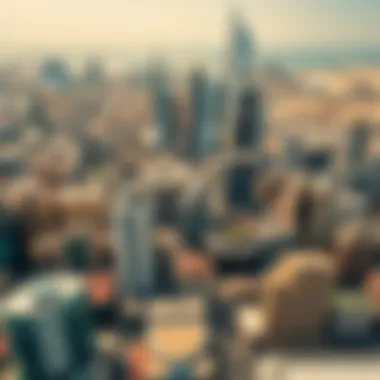
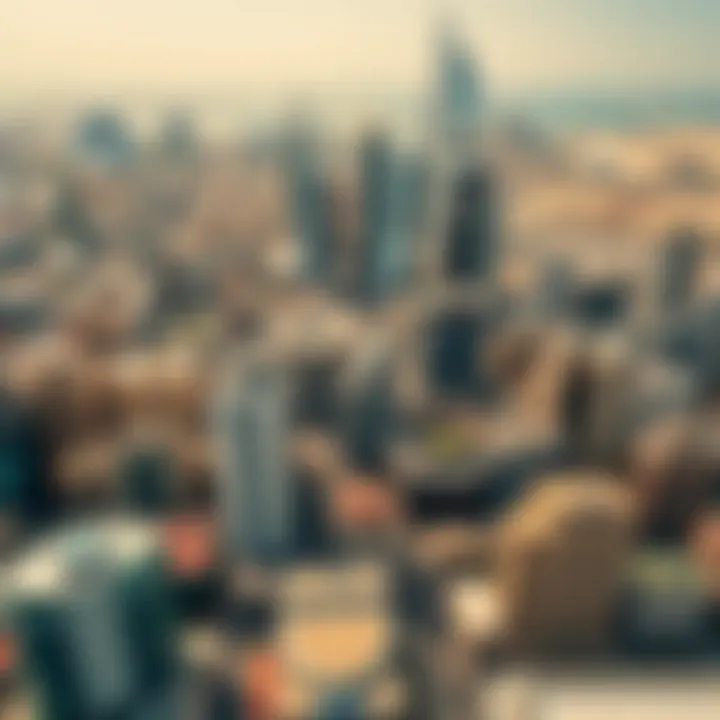
Parks and Recreational Areas
Dubai's approach to parks and recreational areas is both innovative and expansive. Walking through Al Awir Park or even the newly developed Zabeel Park, one can witness how these spaces harmonize nature with urban life. The introduction of these green lungs into the city not only beautifies the landscape but also encourages residents to engage in outdoor activities, promoting physical health and social cohesion.
Designing these parks requires a fine balance between aesthetics and functionality. Features such as jogging tracks, children's play areas, and picnic spots are essential in attracting families. Moreover, amenities such as cafes and restrooms elevate the user experience, making these public parks more welcoming.
In addition to local parks, waterfront developments like the Dubai Marina offer residents a vibrant ecosystem that intertwines leisure with scenic beauty. These areas are not just about relaxation but also about fostering community. Events, markets, and live performances often take place in such spaces, making them lively hubs of communal activity where connections can flourish.
Transportation Infrastructure
The transportation infrastructure of Dubai is a crucial element in urban planning that cannot be overlooked. A well-orchestrated transportation network enhances accessibility and links diverse areas within the city. The culmination of various transport methods, whether the Metro, tram systems, or bus routes, ensures that connecting different neighborhoods is not only efficient but also user-friendly.
Dubai's Metro system, for instance, is often lauded for its state-of-the-art facilities and operational efficiency. It's a transportation marvel that encourages the use of public transport, thereby reducing the reliance on personal vehicles. When urban planners invest in robust transportation solutions, they lay the groundwork for reducing traffic congestion, lowering emissions, and improving overall air quality.
As the city continues to expand outward, new transportation hubs are coming to the forefront, integrating even more advanced technologies. The metropolis aims to innovate with smart transportation solutions that leverage cutting-edge technology for seamless commutes. Initiatives like the Hyperloop or autonomous vehicles hint towards a futuristic approach, showcasing Dubai's eagerness to embrace the next wave of urban mobility.
In summary, public spaces and urban planning resonate deeply within the architectural tapestry of Dubai. They are not merely an afterthought to the imposing skyscrapers; instead, they are essential components that nurture community spirit, promote sustainable living, and facilitate efficient connectivity across this ever-evolving city. By prioritizing these elements, the future of Dubai’s architectural landscape looks promising.
Cultural Architecture: Museums and Heritage Sites
Cultural architecture plays a pivotal role in Dubai's evolving narrative, encapsulating both the soul of the past and the spirit of modernity. Museums and heritage sites stand at the forefront of this architectural journey, showcasing not only the rich history of the Emirates but also the diverse narratives that define its community today. They serve as educational resources, cultural hubs, and focal points for both tourists and locals alike. In the grand tapestry of Dubai's architectural evolution, these sites weave stories that resonate through time, bridging generations and fostering a deeper understanding of Emirati identity and values.
Dubai Museum: Preserving History
Nestled within the old Al Fahidi Fort, the Dubai Museum immerses visitors in the city’s historical context. This museum is a testament to the importance of preserving history amidst rapid modernization. The fort itself dates back to 1787, giving the structure cultural significance that resonates strongly with its exhibits. Underneath its ancient stone walls, the museum documents Dubai's transformation from a small fishing village into a bustling metropolis.
Exhibits range from traditional Emirati lifestyles, featuring recreated souks and scenes of daily life, to artifacts reflecting trade practices and social customs of the past. These displays not only attract sightseers but also serve an educational purpose, instilling pride in national heritage and fostering an understanding of the challenges and triumphs that have shaped the community. Visiting the museum is like stepping into a time machine, one that showcases the spirit of resilience that characterizes the Emirati people.
"A nation that has forgotten its past cannot move forward effectively."
Etihad Museum: Articulating Identity
The Etihad Museum, on the other hand, captures a more contemporary narrative, focusing on the period of the formation of the United Arab Emirates in 1971. This site is dedicated to the collective memory of the nation and is designed to reflect the values of unity and cooperation that led to the creation of the UAE. Its modern architectural design is striking, featuring a series of sleek white arches and embodying the concept of an open and welcoming society.
Inside, interactive exhibits allow visitors to engage deeply with the history of the UAE's formation, showcasing pivotal moments through multimedia experiences and interactive displays. This architectural marvel does not only educate but also inspires pride and a sense of belonging among UAE citizens and expatriates alike. It articulates how cultural identity can be a source of strength in a modernized world.
Challenges Facing Dubai's Architectural Landscape
Dubai, as a rapidly evolving metropolis, presents a fascinating case in the study of architecture. However, this relentless pursuit of modernity comes packed with significant challenges that reshape its skyline and cultural integrity. This section explores these hurdles, emphasizing why they matter not just for the city but for investors, homeowners, expatriates, and agents looking to navigate this vibrant but complex market.
Over-Saturation of Skyscrapers
Dubai is infamously recognized for its striking skyline, peppered with skyscrapers. But this architectural phenomenon has birthed a pressing issue: over-saturation. Buildings like the Burj Khalifa and The Dubai Marina have set high benchmarks for innovation, yet a plethora of newer structures risks diluting their significance.
The city faces a real estate bubble. High-rise buildings promise a quick return on investment, but the risk lies in a potential shortage of demand. What does this mean for prospective buyers?
- Market Saturation: Potential investors and homeowners should approach with caution. The availability of numerous options might lead to an imbalance of supply and demand.
- Investment Viability: Expatriates keen on buying property must consider whether investing in yet another tower is prudent amidst growing competition.
- Cultural Identity: As the skyline becomes crowded, the risk of losing the cultural narrative of Dubai increases. Skyscrapers might symbolize wealth but could erase traditional architectural identity that ties to the heritage of Emirati culture.
"The architectural landscape should resonate with both ambition and identity. Otherwise, we risk becoming a city of glass and steel without soul."
Environmental Considerations
As Dubai paves its path towards becoming a global architectural capital, environmental concerns are increasingly coming to the forefront. The city's rapid development can come at a cost—not just financially, but ethically and ecologically.
- Heat Island Effect: The dense clustering of skyscrapers contributes to higher temperatures in urban settings. Developers must consider green spaces and cooling technologies to counteract this.
- Resource Consumption: Water shortages and electricity demand skyrocket with each new building project. Sustainable solutions, like harvesting rainwater and solar power, become critical.
- Waste Management: Construction and demolition waste pose looming challenges. The city must develop effective waste management strategies to align with global sustainability standards.
In navigating these challenges, Dubai has an opportunity to redefine its architectural principles. The incorporation of green technologies and adaptive reuse of existing buildings could be a game changer, balancing growth ambitions with environmental stewardship, ensuring that this city can sustain its dynamic nature without sacrificing the ecological legacy.
In summary, while the allure of high rises and modernism continues to drive Dubai's ambition, it’s crucial to address the challenges they bring. Only by doing so can we ensure that the city not only thrives but also retains the essence that makes it unique in the architectural world.
The Future of Architecture in Dubai
The landscape of Dubai is one that is continuously evolving, serving as a testament to both ambition and innovation. As the world watches closely, the future of architecture in this vibrant city holds significant importance. It encapsulates not just the structural elements of buildings, but embodies a philosophy—that of melding tradition with modernity, sustainability with opulence, and culture with technological advancements.
Importance of Future Architectural Developments
In this article, we explore how architectural planning in Dubai is not merely about constructing skyscrapers reaching for the stars. Instead, it incorporates community needs, environmental sustainability, and a desire for a cultural identity that resonates through each structure. The collective approach to designing future buildings provides a framework to handle potential challenges while promoting economic growth and enhancing quality of life.
Emerging Architectural Trends
Emerging architectural trends in Dubai suggest a clear orientation towards sustainability, functionality, and cultural context. Architects and urban planners are responding to the pressing need for efficient energy use and environmental friendliness.
- Biophilic Design: More and more buildings incorporate natural elements into their design. Think green walls and rooftop gardens that combat the concrete jungle effect and improve air quality.
- Adaptive Reuse: Instead of demolishing old buildings, architects are seeing potential in these structures. They are being transformed into modern spaces while preserving their historical essence, thus adding layers of new experiences to the city.
- Innovative Use of Materials: Architects are exploring materials that minimize environmental impact. From recycled components to advanced composites, the design choices are driving a new norm towards eco-friendliness.
As these trends consolidate, Dubai is likely to emerge not just as a hub of bright lights, but as a beacon of sustainable innovation.
Smart Cities and Technology Integration
In tandem with architectural trends, the concept of smart cities is gaining traction in Dubai. The integration of technology in urban design shapes not only buildings but entire communities, promoting efficiency and connectivity.
- Internet of Things (IoT): Buildings equipped with IoT technology allow for seamless connections between various systems. Smart lighting, heating, and security systems not only enhance comfort but also optimize energy consumption significantly.
- Data-Driven Design: Architects are using real-time data to assess and respond to environmental conditions and human behaviors. By analyzing factors like foot traffic or environmental sensor readings, designs can adapt dynamically, ensuring functionality.
- Transportation Innovations: The incorporation of autonomous vehicles and advanced public transit systems is paving the way for integrated urban transport solutions. This shift promises to reduce congestion and enhance the overall livability of the city.
"Technology is cutting through the limitations of traditional architecture, paving the way for smarter, more efficient city living in Dubai."
As visionary concepts come to life, the architectural narrative of Dubai is set to expand beyond mere aesthetics. The future is envisioned not just with structural ingenuity but with a deeper understanding of both people’s needs and the planet's demands. This broader perspective provides the foundation needed to navigate complexities and capitalize on opportunities in an ever-changing urban landscape. It remains clear that Dubai is not just shaping a skyline; it is crafting a legacy.















